
PHOTOS : BOTSWANA
The best way to really experience the Okavango Delta intimately is a mokoro ride. One of the reasons for opting for the  Pom Pom Camp in Botswana was its ability to provide both the land safari and the mokoro safari.  A mokoro is a type of a canoe that has been carved from a single tree trunk, although due to conservation efforts fiberglass is being increasingly used nowadays. Generally, it can accommodate about two people and a poler who stands at the rear and steers the mokoro using a long pole. We started at around 7:30 am, a little later than the usual safari, to give the hippos a chance to go into deeper waters in the daytime. The hippos are notorious for overturning the mokoros so it seemed like a good idea to avoid them. The point of the mokoro safari, unlike the land safaris, was to steer clear of the bigger animals and take time to appreciate the smaller creatures, the birds and the plant life that the delta offers.
My mom & I got into one mokoro, Dwiti and a very nervous Asif into another one leaving Seejo with his camera equipment in the third one.
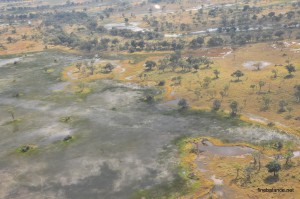
The weather was pleasant : the early morning chill had receded slightly and the sun wasn’t at its peak as yet. As we started off from the camp and slowly made our way through the shallow waters, our guide explained to us how the delta was formed. The rains in highland Angola to the north of Botswana, swells the River Okavango as it flows southwards towards Botswana.  When the water reaches northern part of theKalahari desert in Botswana, it splits into thousands of tiny tributaries and creates an oasis of green in the barren Kalahari.  Between the months of March and June, the water slowly invades this region, transforming it into a swamp like area supporting an astounding variety of both plant and animal life. Due to the ebb and flow of the water, about a hundred thousand islands, both big and small, are created between the slow moving water channels.
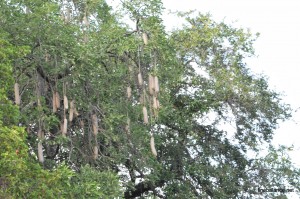 We were gliding in one such channel amongst the tall reeds that grow in the water. From my perspective, it looked like we were paddling along in a large lush field of grass. Our poler, Lewen, was pointing out the various trees that grew along the banks: the baobab tree with its immense tree trunk and the aptly named “sausage†tree so named for its tough inedible elongated fruit. “I will not allow you to sleep under this treeâ€, Lewen informed us piously. “If a fruit falls on you, it could break your neckâ€, he continued despite my murmuring that I wasn’t really planning to wade out to the banks and have a quick snooze.  He also pointed out the numerous termite hills which dotted the delta, some of them growing over 10 feet in height, and explained how to distinguish between the active ones and those that are abandoned : the latter have gaping holes that are probably home to snakes & other reptiles.  I had heard that the presence of termite hills indicate a healthy ecosystem and if that was true, based on the widespread presence, I concluded that the delta was indeed a thriving ecosystem.
We were gliding in one such channel amongst the tall reeds that grow in the water. From my perspective, it looked like we were paddling along in a large lush field of grass. Our poler, Lewen, was pointing out the various trees that grew along the banks: the baobab tree with its immense tree trunk and the aptly named “sausage†tree so named for its tough inedible elongated fruit. “I will not allow you to sleep under this treeâ€, Lewen informed us piously. “If a fruit falls on you, it could break your neckâ€, he continued despite my murmuring that I wasn’t really planning to wade out to the banks and have a quick snooze.  He also pointed out the numerous termite hills which dotted the delta, some of them growing over 10 feet in height, and explained how to distinguish between the active ones and those that are abandoned : the latter have gaping holes that are probably home to snakes & other reptiles.  I had heard that the presence of termite hills indicate a healthy ecosystem and if that was true, based on the widespread presence, I concluded that the delta was indeed a thriving ecosystem.
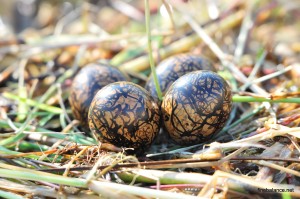 In between the description of the local flora and fauna, Lewen went on to describe the three prominent local tribes in this area: the Baiyeyi who
In between the description of the local flora and fauna, Lewen went on to describe the three prominent local tribes in this area: the Baiyeyi who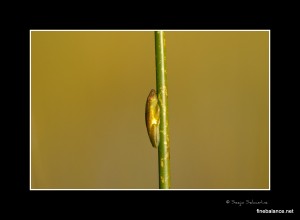 were primarily fisherman, the Banoko who were the hunter gatherers and the Hambukushu who were farmers growing millet or sorghum: the staple diet of the locals.  According to him, this area was called Pom Pom by the tribes here which actually means mosquito infected in the local tongue.  His narrative was interrupted when we saw the jacana bird with its long legs and a queer way of skimming the surface of the water. This particular skill of walking on water has given it a nickname: The Jesus Bird. The female generally lays its eggs and takes off leaving the male to look after the eggs, giving it another moniker: the river prostitute. Seejo & his poler were lucky enough to see its nest with 4 black and white patterned eggs that looked as though they were painted by an abstract artist.
were primarily fisherman, the Banoko who were the hunter gatherers and the Hambukushu who were farmers growing millet or sorghum: the staple diet of the locals.  According to him, this area was called Pom Pom by the tribes here which actually means mosquito infected in the local tongue.  His narrative was interrupted when we saw the jacana bird with its long legs and a queer way of skimming the surface of the water. This particular skill of walking on water has given it a nickname: The Jesus Bird. The female generally lays its eggs and takes off leaving the male to look after the eggs, giving it another moniker: the river prostitute. Seejo & his poler were lucky enough to see its nest with 4 black and white patterned eggs that looked as though they were painted by an abstract artist.
We crossed one of the larger channels to take a mid-morning break in a tiny island characteristic of the delta.  The hippos and crocodiles tended to lurk in these deeper waters but the polers crossed it quickly & very skillfully maneuvering the mokoro with seemingly little effort. When I said, a tiny island, I meant it: I could walk across the island in about 15 steps! We had another passenger with us when we stopped for our break: a green–colored adult male reed frog grown to its full size : about 1 cm.
to lurk in these deeper waters but the polers crossed it quickly & very skillfully maneuvering the mokoro with seemingly little effort. When I said, a tiny island, I meant it: I could walk across the island in about 15 steps! We had another passenger with us when we stopped for our break: a green–colored adult male reed frog grown to its full size : about 1 cm.
On our way back, I asked Lewen the answer to a question I always wanted to ask “Who wins in a fight between a Hippo and a crocodile?â€Â “Most of the time, they co-exist peacefullyâ€, he responded and then proceeded to tell a local fable that illustrated that fact. “Once upon a timeâ€, he began in true time tested fashion , Mr. Hippo lived on a tiny island. He was happy living on the land but one fine day there was a fire on the island. Mr. Hippo ran everywhere to hide from the leaping flames but there was no place to go. So when Mr. Hippo’s skin started to burn, so he finally decided to jump into the water. But just as he entered the water, someone started yelling “Stop! Stop!†He turned around to see that Mr. Crocodile was calling out to him “You can’t enter the water, Mr. Hippoâ€, said Mr. Crocodile. “You will eat all my fishes and then what will I be left with?â€Â Mr. Hippo responded “No,no Mr. Crocodile, I will not eat any fishes, I just want to cool my skin. I will only eat the grass and leave the fishes for you†“How can I believe you?†asked the wily crocodile. “You say that now but how will I know you have kept your promise?†By now Mr. Hippo was desperate. His idea reflected that. “Every night, I will go ashore and spray my dung in all directions. All you have to do is to inspect my dung, If you see any fish bones or scales then you will know I haven’t kept my promiseâ€. Mr. Crocodile agreed to this plan. And so, Lewen concluded that is why the hippos always go to the land at night and spray their dung and that is how the hippos and crocodiles live peacefully together.
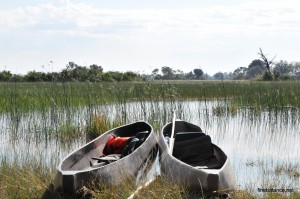 There is nothing more relaxing than sitting in a mokoro gliding through a field of beautiful fragrant water lilies under a azure sky while you listen to local animal tales from your poler. Unless it is when the poler plucks a water lily with a long stalk and quickly manages to make you a pretty necklace with a floral pendant! Perfect moments from a perfect vacation!
There is nothing more relaxing than sitting in a mokoro gliding through a field of beautiful fragrant water lilies under a azure sky while you listen to local animal tales from your poler. Unless it is when the poler plucks a water lily with a long stalk and quickly manages to make you a pretty necklace with a floral pendant! Perfect moments from a perfect vacation!
